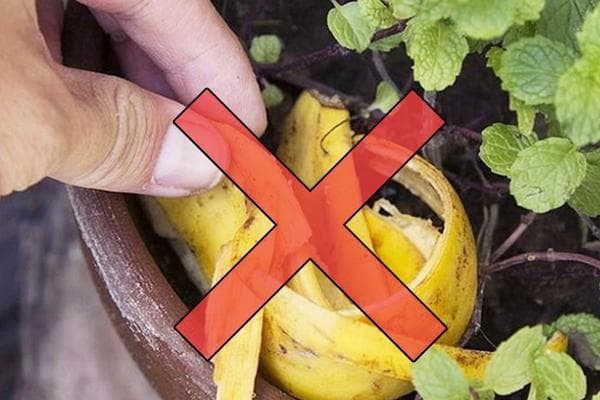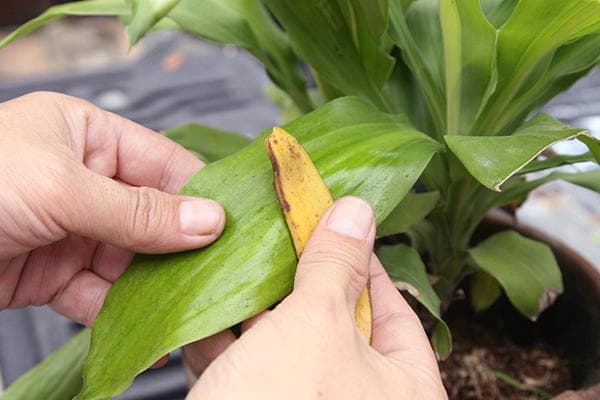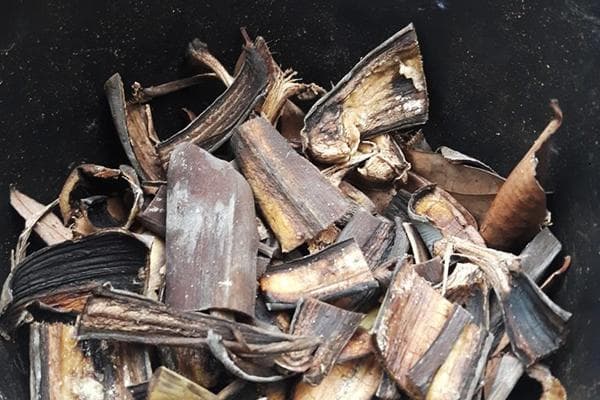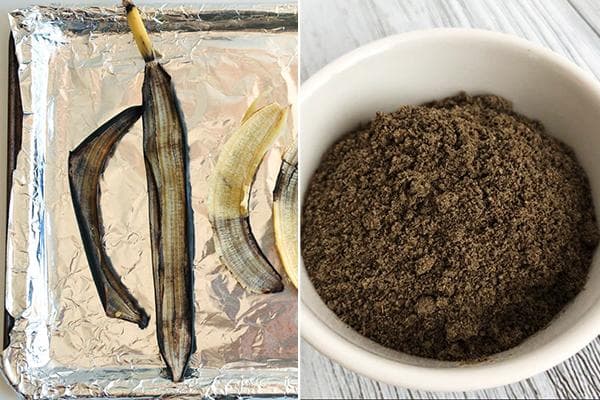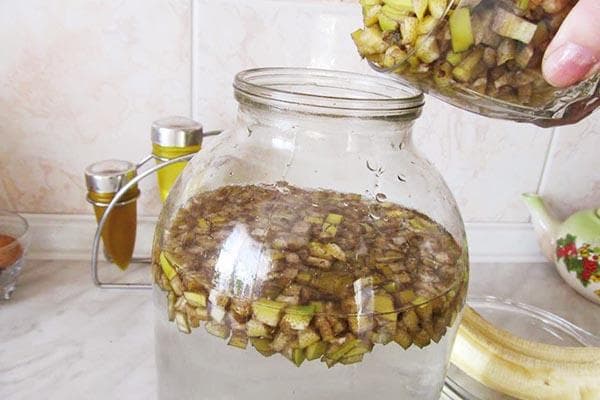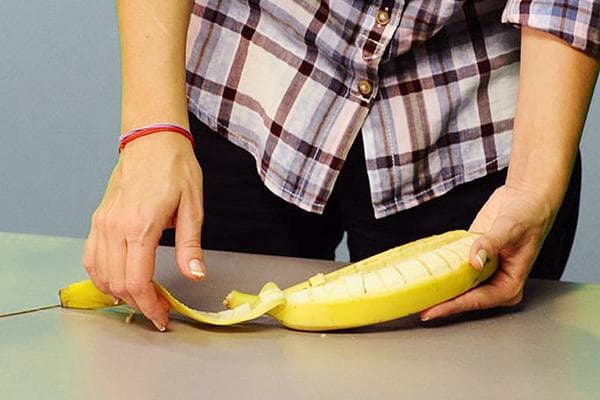Using banana peels for indoor flowers
Unconventional means are often used to feed plants on the windowsill. By using banana peel for indoor flowers, you can improve their appearance and health, accelerate growth, and promote root development. In addition, some substances contained in banana peels have an insecticidal effect and help get rid of pests. Recipes for folk remedies are simple, safe, and do not even require minimal costs.

What are the benefits of banana peels for plants?
Many already know that the surface shell of vegetables and fruits contains no less, and sometimes more, useful substances than the fruit itself. That is why the use of banana peels as fertilizer is completely justified.
Banana skin contains a significant amount of useful elements:
- potassium;
- manganese;
- sodium;
- calcium;
- phosphorus;
- magnesium;
- gland;
- sulfur.
The basis of the skin tissue is made up of organic substances consisting of fiber, proteins, fats and carbohydrates. Banana peel is rich in acids, tannins, pectins, and saponins.
The greatest benefits for plants are, of course, macro- and microelements. Thanks to potassium, nutrients are evenly distributed in cells, the mineral strengthens plant stems and provides protection against certain diseases. Phosphorus is important for the processes of flowering and fruiting and increases resistance to adverse environmental factors.Sulfur and magnesium are involved in the formation of chlorophyll, necessary for plant photosynthesis.
Flower growers recommend using self-prepared fertilizer to feed Saintpaulia, cyclamen, roses, calamondin, kumquat, lemon, begonia, and coffee tree.
For flowering species, banana peel will provide active budding and long-term flowering; for fruit-bearing plants, it will help replenish the energy spent on fruit formation. For decorative leaf flowers, this fertilizer can also be used and be useful.
How to use banana skins as fertilizer?
Banana peel belongs to the group of organic fertilizers and can be used to prepare infusions, decoctions, and compost. It is also used fresh. This fertilizing is perfectly absorbed by plants and helps them replenish the deficiency of important substances.
Fresh use
Fresh banana peels are recommended for use during planting and replanting. It must be separated from the roots by a layer of soil, otherwise the root system may get burned during the decomposition of organic matter.
You need to do this:
- the peel is cut into cubes and placed on the bottom of the pot on top of the drainage layer;
- pour pre-prepared soil;
- place the plant in the center, having first straightened the roots;
- fill the remaining voids in the pot with soil, tapping the walls.
After planting, the flower is watered moderately. In 1.5–2 weeks, the peel completely decomposes, releasing beneficial substances to the plant.
It is important to consider that before sale, bananas are treated with chemical compounds so that they do not spoil during long transportation.Therefore, if you plan to use the skin of the fruit as a fertilizer, the bananas must be thoroughly washed before they are peeled.
It is not advisable to leave the peel on the surface of the soil in the pot. In this form, the fertilizer will not be useful and, in addition, will begin to emit an unpleasant odor, cause mold, and attract fruit flies.
The inside of a banana skin can be used to wipe the leaves of indoor flowers. This will help clean the foliage from dust, give it shine and at the same time nourish it with useful substances. In order not to provoke an excess of microelements, the procedure is carried out no more than once a month. The rest of the time, the leaves of the plant are wiped with clean water.
Making compost
Compost is a natural organic fertilizer suitable for most indoor plants. It is especially useful to use it for bulbous crops.
The process of making compost for flowers from banana peels:
- Fill half the bucket with garden soil or any other soil;
- The skins of several bananas, crushed with a knife, are also placed there;
- the components are mixed to distribute them evenly;
- the mixture is watered with biological fertilizer “Baikal” and mixed again;
- cover the bucket with a lid;
- after 30 days, banana skins and the Baikal preparation are added again.
In 1–2 months the compost will be ready. The finished fertilizer is distributed into flower pots and then embedded in the top layer of soil. During the spring-summer season, fertilizing can be done 2-3 times.
Powdering
The shell of the fruit must first be thoroughly dried. In summer, it is convenient to dry in the open sun; in winter, the process can take place near a heating radiator. Periodically turn the skin over.The readiness of the product is determined by appearance and touch - the peel should acquire a dark brown color and harden.
After drying, the workpieces are ground in a blender (you can use a coffee grinder). The finished powder is stored in a closed glass jar. Use fertilizing once every 4 weeks, sprinkling the top layer of soil and then watering the flower. This fertilizer will be especially useful for weakened and recovering plants.
Decoctions, infusions, cocktails
Top dressing can be made in the form of a decoction, infusion or cocktail. Sometimes banana is combined in homemade fertilizer with other ingredients, such as orange peels.
Making a decoction is quite easy:
- the washed skin of one banana should be placed in a large cup or glass jar and filled with 300 ml of just boiled water;
- Cover the top of the jar with a lid and wrap it in a towel folded in several layers;
- After 3 hours, the broth is filtered and used for its intended purpose.
This fertilizer cannot be stored for a long time; it is used immediately after preparation. This amount is enough for several indoor plants. Add 2 tbsp to each 3 liter pot. l. banana broth. Feeding is carried out every 2 weeks.
To prepare the infusion, you will also need the skin of one banana. The process takes a little longer since water at room temperature is used:
- banana peel is crushed and placed in a liter jar;
- the container is filled to the top with cool water;
- The neck of the jar is covered with gauze;
- the composition is infused at room temperature for 24 hours.
The infusion has a specific smell; it should be used immediately after it is ready. Fertilizer is applied at the root of the plant in an amount of 50 ml.
A mixture based on banana peel, orange zest and a small amount of sugar will benefit the plants. Cooking method:
- banana peels and orange zest are placed in a three-liter jar, filling the volume by 1/3;
- then add 1 tbsp to the container. l. Sahara;
- The mixture is poured with water at room temperature, not reaching the top of the jar 5 cm.
The fruit cocktail is infused for a month, after which it is filtered. Before use, the resulting concentrate is diluted with warm water in a ratio of 1:20. This fertilizing can be applied once every 4 weeks. The concentrated infusion is stored in the refrigerator for six months.
Banana peel as a remedy for aphids
Banana peel can be used to prevent aphid infestation and can be used for small numbers of pests as a natural insecticide:
- A small amount of skin is buried in the top layer of soil - this will repel insects.
- You can use an infusion prepared from the peel of one banana and 1 liter of cold water. The mixture is infused for a day, and then filtered, diluted with the same amount of water and used to spray infected flowers. At the same time, the infusion will serve as a foliar feeding.
You can spray only those flowers that do not have pubescence on the leaves. In particular, this method will not work for violets and gloxinias.
When fertilizing with banana peels, reviews are positive when the fertilizer is applied correctly. You should not apply it more often than 1-2 times a month. Fresh skin should be embedded in the soil; it should not be left on the surface of the soil. When used wisely, feeding banana peels invariably brings benefits to plants.
